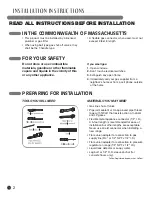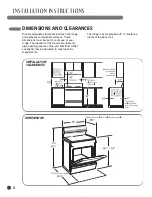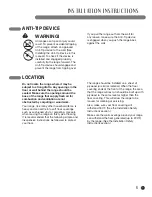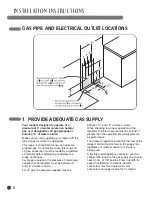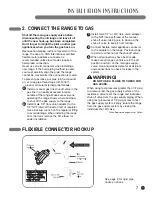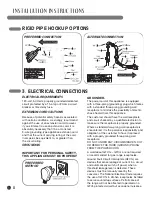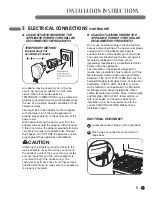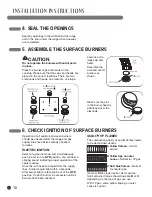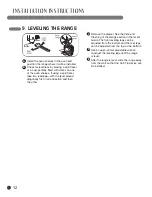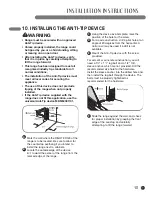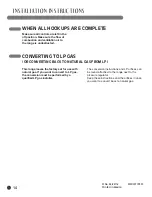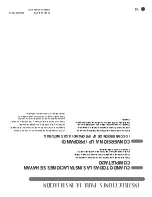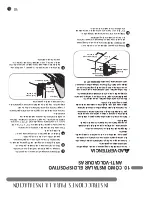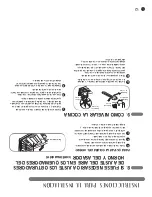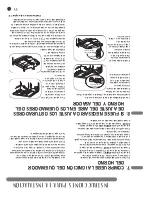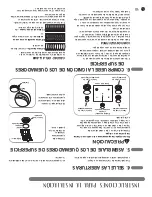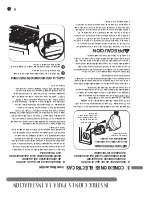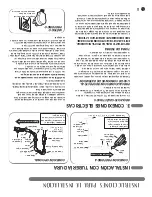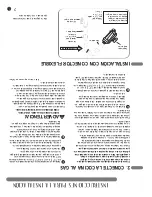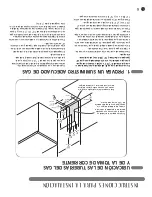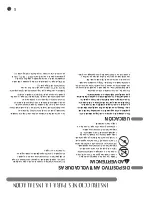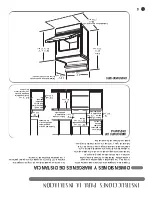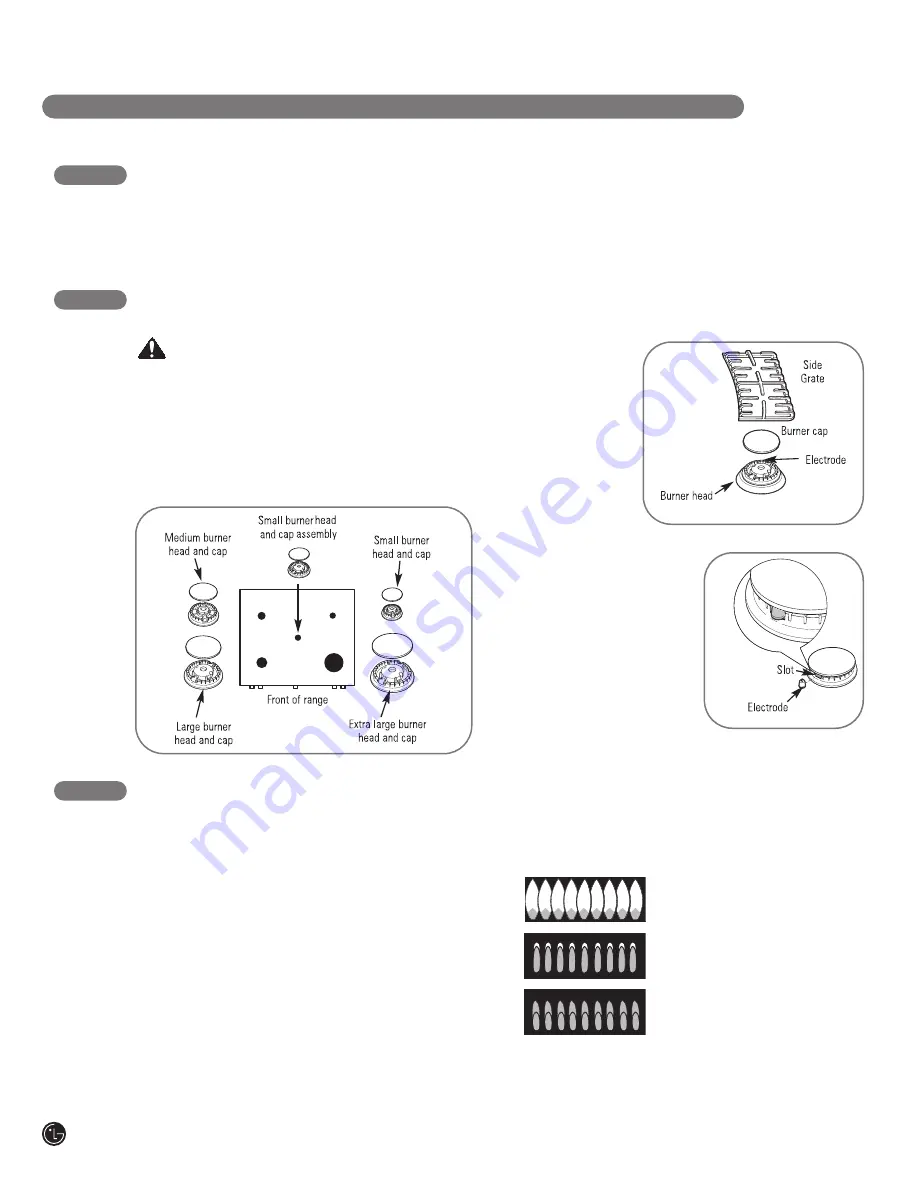
10
4. SEAL THE OPENINGS
Seal any openings in the wall behind the range
and in the floor under the range when hookups
are completed.
I N S TA L L AT I O N I N S T RU C T I O N S
5. ASSEMBLE THE SURFACE BURNERS
CAUTION
Do not operate the burners without all parts
in place.
Place the burner caps and heads on the
cooktop. Make sure that the caps and heads are
placed in the correct locations. There are two
small caps and heads, one medium, one large,
and one extra
large cap and
head.
Assemble the
side and center
burners as
shown.
Make sure the slot
in the burner head is
positioned over the
electrode.
6. CHECK IGNITION OF SURFACE BURNERS
Operation of all cooktop and oven burners
should be checked after the range and gas
supply lines have been carefully checked
for leaks.
ELECTRIC IGNITION
Select a top burner knob and simultaneously
push in and turn to
LITE
position. You will hear a
clicking sound indicating proper operation of the
spark module.
Once the air has been purged from the supply
lines, burner should light within 4 seconds.
After burner lights, rotate knob out of the
LITE
position. Try each burner in succession until all
burners have been checked.
QUALITY OF FLAMES
The combustion quality of burner flames needs
to be determined visually.
A Yellow flames
—Call for
service
B Yellow tips on outer
cones
—Normal for LP gas
C Soft blue flames
—Normal
for natural gas
If burner flames look like
A
, call for service.
Normal burner flames should look like
B
or
C
,
depending on the type of gas you use.
With LP gas, some yellow tipping on outer
cones is normal.


